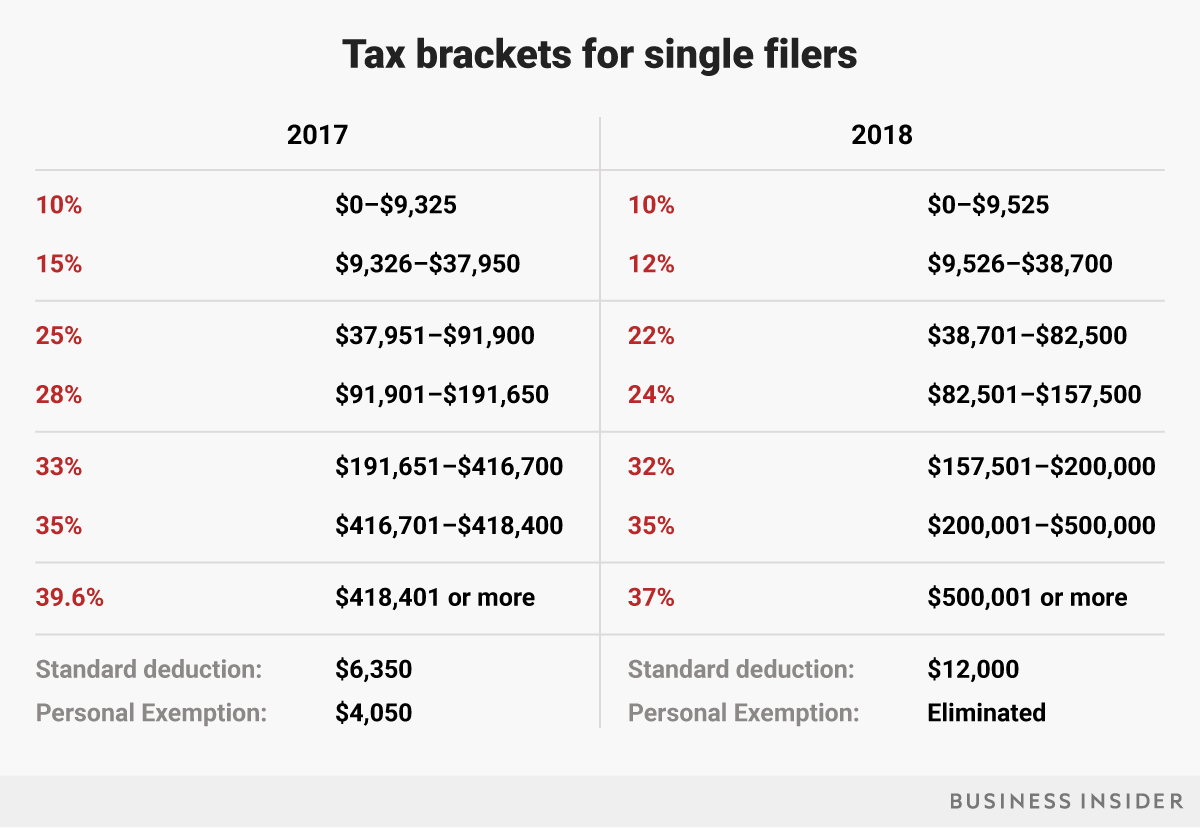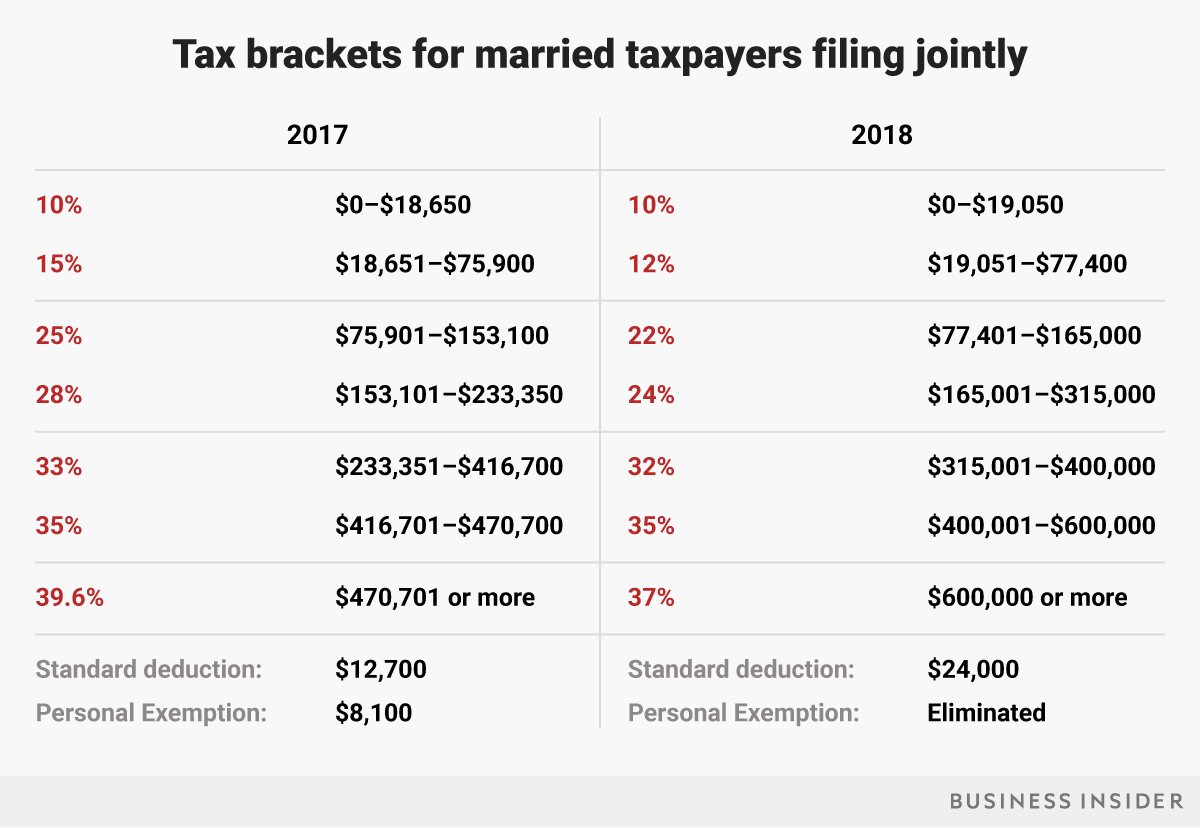Here's how your tax bracket will change in 2018
President Donald Trump signed the Republican tax bill into law at the end of December.
2018 tax brackets have been changed under the new law, and are in effect starting this year.
There are still seven income tax brackets, but the ranges have been adjusted.
The personal exemption has been eliminated, and the standard deduction has been increased.
President Donald Trump signed the Republican tax bill into law at the end of December.
The new legislation makes sweeping changes to the tax code for businesses and, on average, American taxpayers.
The tax bill went into effect on January 1, and applies to income earned this year. However, the new tax brackets will not affect taxes paid on tax day 2018 — which falls on April 17 this year — as Americans file tax returns for income earned in 2017, under the previous income tax brackets and law.
Here's how the new tax plan will change federal income tax brackets in 2018 compared with those in 2017.
First, for single filers:

Skye Gould/Business Insider
10%: $0 to $9,525 of taxable income for an individual
12%: $9,526 to $38,700
22%: $38,701 to $82,500
24%: $82,501 to $157,500
32%: $157,501 to $200,000
35%: $200,001 to $500,000
37%: over $500,001
And second, for joint filers:

Skye Gould/Business Insider
10%: $0 to $19,050 for married joint filers
12%: $19,051 to $77,400
22%: $77,401 to $165,000
24%: $165,001 to $315,000
32%: $315,001 to $400,000
35%: $400,001 to $600,000
37%: Over $600,000
There are still seven federal income tax brackets — but at slightly lower rates and adjusted income ranges.
About 70% of Americans claim the standard deduction when filing their taxes, and their paychecks will almost certainly increase — albeit slightly.
RELATED: Here are some of the most common thoughts while filing taxes:
In 2017, the standard deduction for a single taxpayer was $6,350, plus one personal exemption of $4,050.
The new law combines those into one larger standard deduction for 2018: $12,000 for single filers and $24,000 for joint filers.
Elena Holodny contributed to an earlier version of this post.
SEE ALSO: 5 last-minute tax moves to make now before the GOP tax plan goes into effect
More from Business Insider:
MORGAN STANLEY: We're convinced these 7 stocks will explode higher over the next 2 months
The hottest thing in cancer drug development just won a $9 billion endorsement
Verizon has a new plan to take on Google and Facebook — but it needs to move fast
NOW WATCH: Here's what Trump's tax plan means for people at every income level from $20,000 to $269,000 a year
